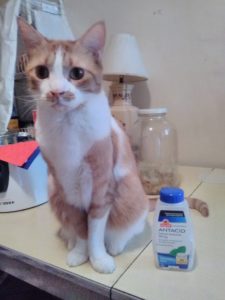Anthony writes:
In TWiM 71, Professor Schmidt posits that research in the human microbiome begins with the question “Who’s there?” That roster very likely will be a Who’s on first, What’s on second taken to the nth degree. When — as you mentioned — interactions are considered, the task of explanation appears daunting. Whenever the keys indeed are found under the streetlight in the form of a phage, that will make solution discovery tractable.
Stool transplants sometimes seem to have about as much theoretical framework as the funerary cannibalism of the Fore people of Papua New Guinea. And similarly risky, too?
FWIW
Bacteriophage transfer during faecal microbiota transplantation in Clostridium difficile infection is associated with treatment outcome
http://gut.bmj.com/content/early/2017/05/24/gutjnl-2017-313952
“…
What are the new findings?
- CDI was characterised by a high abundance of Caudovirales bacteriophages and a low Caudovirales diversity, richness and evenness compared with healthy household controls.
- Donor-derived Caudovirales taxa occupied a significantly larger fraction of the enteric virome in CDI subjects who responded to FMT compared with those who did not.
- FMT was associated with alterations in the enteric virome and bacterial microbiome, while vancomycin treatment was associated with alterations of the bacterial microbiome only.
- Recipients infused with donor faeces consisting of a higher richness of Caudovirales than that of recipient were all cured with FMT. CDI subjects who had restoration of bacteria community only were found to have disease recurrence
…”
Anthony writes:
Though in TWiM 157 Dr. Schaechter was mistaken concerning the brand, calcium carbonate indeed is an ingredient in antacid remedies.

The cat’s name is Blake.
Thank you.
Justin writes:
Dear TWiM,
A quick comment on episode 158. There was a brief diversion into animal prions while discussion the PNAS paper on Prokaryotic viral sequence in the brain. Someone (I won’t mention any names) said that bovine spongiform encephalopathy (BSE) was created when scrapie from sheep passed to cattle through contaminated meat and bone meal in the UK.
This was an early hypothesis that has not been supported by studies conducted here or in the UK. The scrapie agent will cause disease in cattle after intracranial inoculation, but the pattern of lesions can be differentiated from BSE and the molecular profile is different than BSE when examined by western blot. Attempts to infect cattle with the scrapie agent via oral challenge have failed, whereas oral transmission of BSE occurs readily .
Admittedly, there are different options that have not been tested. There are different recognized strains of the scrapie agent- not all of them have been tested for infectivity in cattle, and they probably won’t be as these studies take years and are very expensive. Also, there are different prion protein gene (PRNP) polymorphisms that dictate relative susceptibility of sheep to the scrapie agent- perhaps there is a specific genotype of sheep that makes better a better prion donor to cattle.
In summary, it’s complicated and not as simple as BSE coming from sheep. Where did BSE come from? If I started on that topic, then this would no longer be a quick comment.
Keep up the good work,
Justin
Justin J. Greenlee, DVM, PhD, Diplomate ACVP
Virus and Prion Research Unit
National Animal Disease Center
USDA, Agricultural Research Service
Ames, IA 50010
Peter writes:
Dear TWiM team.
Greetings from hot, sunny and humid Mersin, Turkey. Daytime temperature 33° C and Humidity 79%.
I don’t think this has been covered on TWiM before.
To interest young people in the issue of antibiotic resistance, Dr Adam Roberts of University College London developed the ‘Swab and Send’ citizen-science project to get people actively involved in the search for new antibiotic compounds.
Members of the public to swab and send – swabs taken from everyday objects in the local communities are sent to his lab for analysis for antimicrobial activity. Improving awareness of antibiotic resistance and contributing search for new products.
Facebook page for the project here https://www.facebook.com/swabandsend/
Details of the project here http://www.ucl.ac.uk/amr/outreach/case/swab
Univ of Michigan Fight Song… https://www.youtube.com/watch?v=Oww_gtVVqkQ
Regards
Peter Foster
